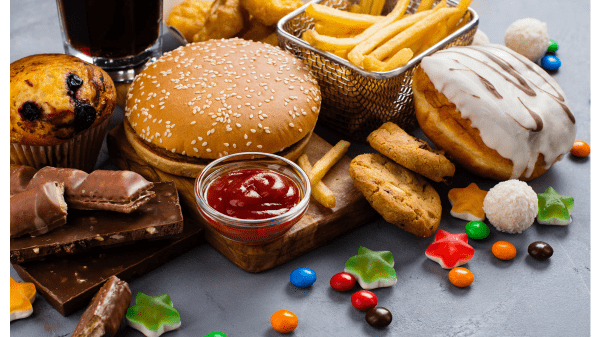If the produce industry has a single greatest enemy, its name is HPF. Which stands for hyperpalatable foods. Foods that are designed to taste addictively good. There are a lot of them on the market.
What counts as HPF? A study recently published in the journal Addiction spells it out.

Items that met criteria for at least one of the following were classified as HPF: (1) FSOD (over 25 percent of calories from fat, at least 0.30 percent sodium), (2) FS (over 20 percent of calories from fat, over 20 percent of calories from sugar) and (3) CSOD (over 40 percent of calories from carbohydrates, at least 0.20 percent sodium).
If that sounds too technical, let’s try something easier. In short, the list includes many of your favorites, such as Oreos, Ritz and Premium crackers, Oscar Mayer hot dogs and sausages, Miracle Whip, and “frozen/convenience meals.”
The study found something else: an unusually large number of these product lines were owned by tobacco companies between 1980 and 2001.
The tobacco industry burgeoned in the 1950s, partly because manufacturers designed cigarettes to be as addictive as possible. The government didn’t like this and started to regulate the tobacco industry. In response, tobacco companies (notably RJ Reynolds and Philip Morris) diversified by entering the food business, buying major lines such as Kraft and General Foods.
“Evidence has revealed that RJR [RJ Reynolds] and PM [Philip Morris] directly applied their tobacco product formulation strategies to their food company practices,” says the study. “Tobacco-owned food subsidiaries learned product formulation strategies from company tobacco scientists, which included adding a variety of appealing colors to their sugar-sweetened beverages and adding sugar and caffeine to maximize consumption.”
By the start of this century, the tobacco companies had divested themselves of these companies, but their tactics remained. As a legacy of Big Tobacco, HPF products “have become highly prevalent in the US food environment today,” the study concluded.
“Despite growing scientific evidence regarding the addictive properties of HPF, there are no federal regulations addressing HPF accessibility. The state of the food environment for US consumers bears a striking resemblance to the US environment in the 1950s during the tobacco pandemic, before the US federal government regulated the availability of tobacco products.”
The produce industry laments—with justice—low consumption of fresh fruits and vegetables among the American population. The facts above go far toward explaining this problem. Your healthy apples and grapes are competing with food that are manufactured to be addictive. It’s not a fair fight.
The authors of the study call for federal regulation of HPF along the lines of that for tobacco products.
Whether this will ever occur is an open question. In any event, the produce industry should be aware of what it is up against, and why.



